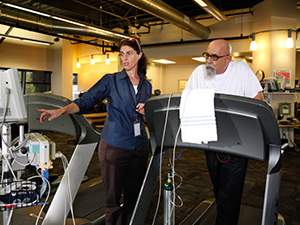What Is a Pulmonary Rehabilitation Program?
Pulmonary Rehabilitation
Pulmonary rehabilitation (rehab) programs help people with chronic lung problems breathe better and improve their overall health and strength. The programs are led by healthcare professionals who are trained to treat people with lung disease. With their help, you’ll learn about your condition and gain skills to help you manage it.
Features
Pulmonary rehab programs include:
Exercise. To help you increase endurance, strength, and flexibility.
You may walk, ride a stationary bike, or do exercises in a chair.
You will be taught stretches to do before and after exercise.
You may also use weights to build strength.
Your pulse, heart rate, and oxygen levels may be checked during exercise.
Education. About your lung problem.
Self-management. Information about medicines, oxygen, and other equipment.
Counseling. Emotional support and problem-solving.
Stop-smoking. For smokers, ways to quit and support.
Benefits
Pulmonary rehab will help you:
Do more of the things you enjoy.
Improve your strength.
Be more independent.
Complete daily activities, such as household tasks, with less shortness of breath.
Manage your symptoms and medicines. This can mean fewer emergency room visits and less time in the hospital.
Deal with shortness of breath.
Quit smoking. This is the most important change you can make for your health.
Get answers to your healthcare questions.
Set and meet realistic goals.
Updated:
February 14, 2018
Sources:
Pulmonary Rehabilitation in COPD. UpToDate.
Reviewed By:
Blaivas, Allen J., DO,Sather, Rita, RN,Images Reviewed by Staywell medical art team.
